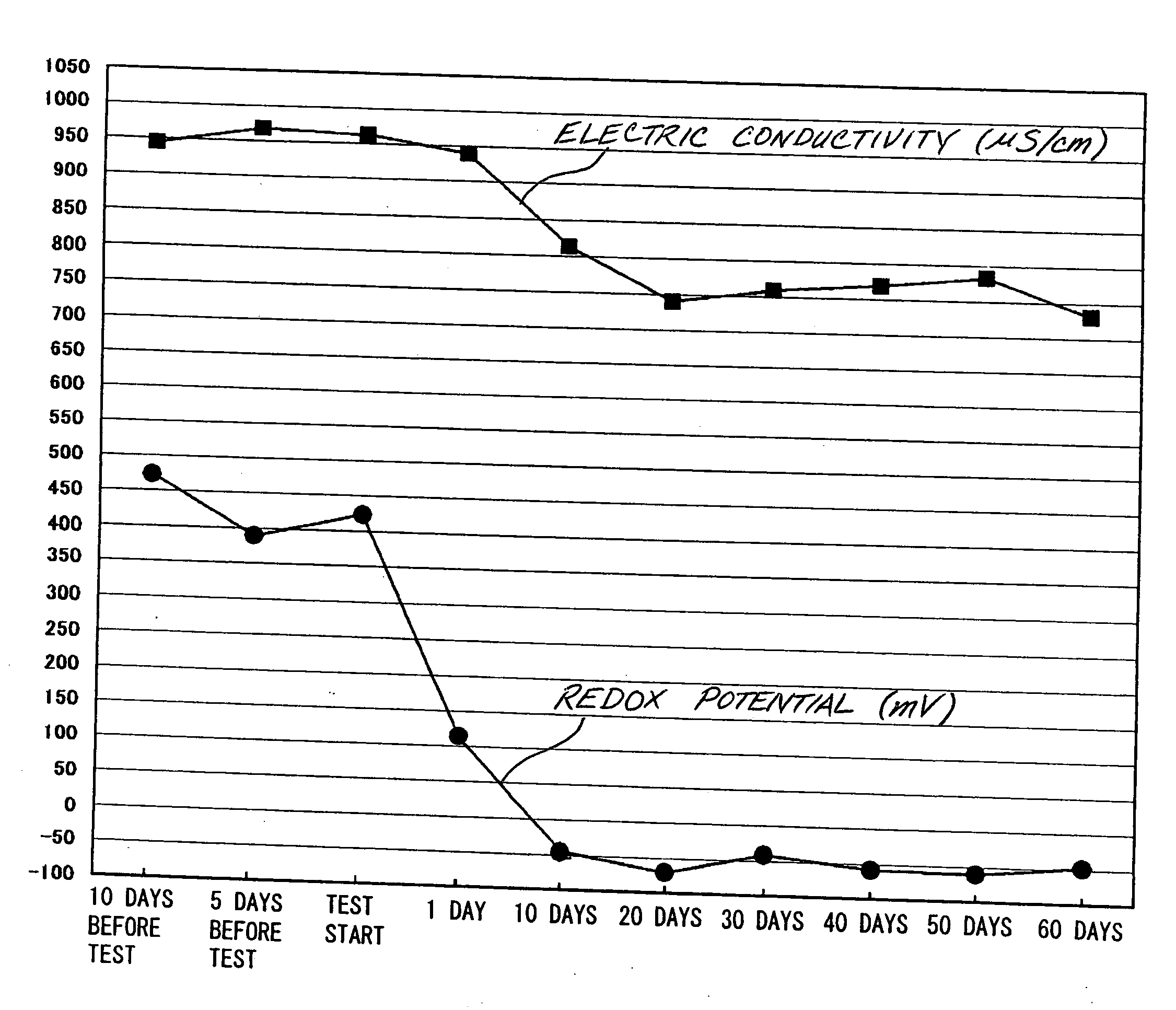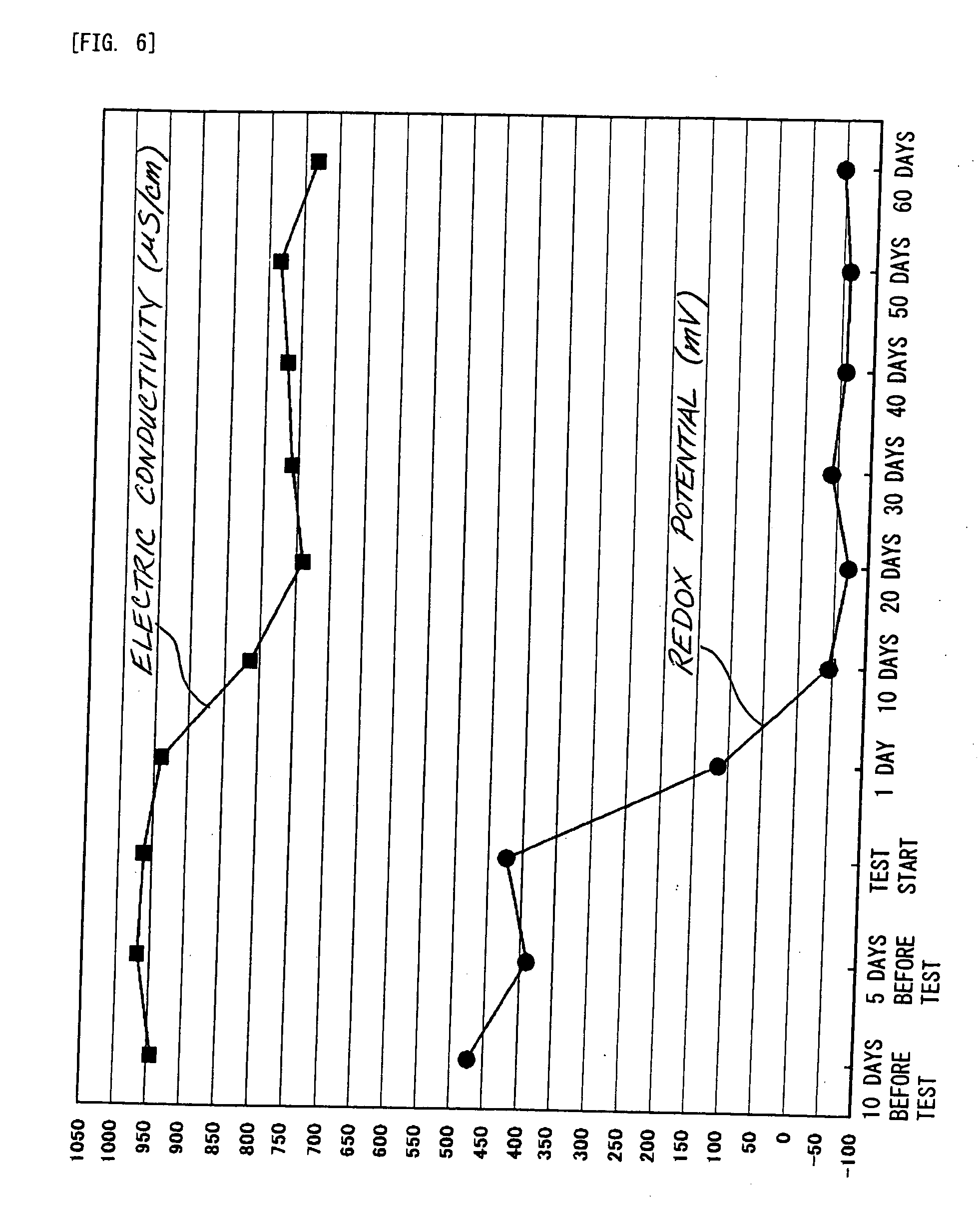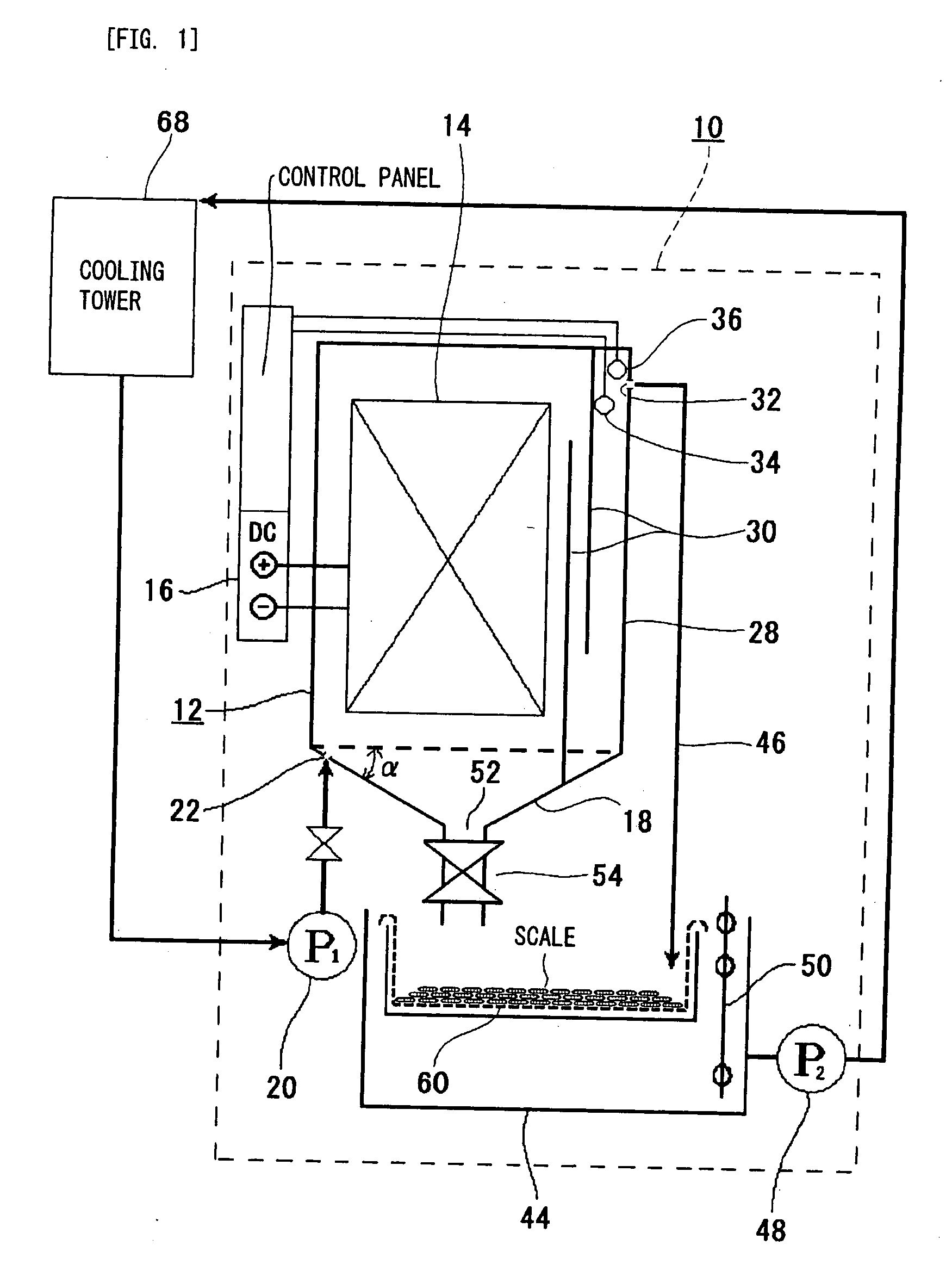Method and Device for Cleaning Circulation Water
a technology for cleaning devices and circulation water, which is applied in the direction of liquid fuel feeders, machines/engines, and the nature of treatment water, etc., can solve the problems of cumbersome operation and maintenance of cleaning devices, impaired cleaning performance of circulation water, and increased cost, so as to reduce the cost of operation and maintenance, the effect of efficient removal
- Summary
- Abstract
- Description
- Claims
- Application Information
AI Technical Summary
Benefits of technology
Problems solved by technology
Method used
Image
Examples
example 1
[0072]Circulation water in a cooling tower with a capacity of 120 refrigerating tons was withdrawn from a circulating channel, cleaned by passing through a device according to the present invention, and then brought back to the circulating channel.
[0073]The electrode plate unit 14 used in the device according to the present invention was comprised of seventy-two (72) titanium plates, having a width of 300 mm, a height of 600 mm, and a thickness of 1 mm. The thirty-six (36) plates were oriented so as to face the other thirty-six (36) titanium plates with a pitch of 24 mm between the plates. A constant current DC source was used as the DC source 16, in order to supply a constant current of six amperes to the electrode plate unit 14.
[0074]As shown in FIG. 5, voltage between the electrode plates was 0.5 V during an initial period, and derived from the constant current between the electrode plates supplied by the constant current DC source. However, the voltage gradually increased in con...
example 2
[0076]This experiment was performed in the same manner described in Example 1, except that the current density flowing between the electrode plates in the unit varied at three levels, i.e. 0.7 mA m2, 1.4 mA / m2 and 2.1 mA / m2. FIG. 7 shows the electric conductivity of the circulation water. This experiment demonstrates that higher current density decreases the electric conductivity of circulation water in a shorter period.
example 3
[0077]After a one-week of continuous operation under the conditions described in Example 1, the polarity was reversed and the operation was continued, and as a result, scale firmly adhered to the surface of the positive electrodes, which were negative electrodes before, was peeled off and deposited in the bottom of the electrolysis tank.
[0078]The operation was then continued for one more week under the same conditions, the scale was firmly adhered to the surface of the negative electrodes, as is the case with the initial operation. However, it was anticipated that further continuous operation would leave the scale firmly adhered to the negative electrodes, thereby making the recovery of the scale difficult, or reducing the efficiency of the adhesion of the scale due to the electric resistance. Therefore, the operation was continued by reversing the polarity alternately once every other week. As a result, scale adhered to the negative electrodes was efficiently peeled off, and then d...
PUM
| Property | Measurement | Unit |
|---|---|---|
| current | aaaaa | aaaaa |
| electric conductivity | aaaaa | aaaaa |
| conductivity | aaaaa | aaaaa |
Abstract
Description
Claims
Application Information
 Login to View More
Login to View More - R&D
- Intellectual Property
- Life Sciences
- Materials
- Tech Scout
- Unparalleled Data Quality
- Higher Quality Content
- 60% Fewer Hallucinations
Browse by: Latest US Patents, China's latest patents, Technical Efficacy Thesaurus, Application Domain, Technology Topic, Popular Technical Reports.
© 2025 PatSnap. All rights reserved.Legal|Privacy policy|Modern Slavery Act Transparency Statement|Sitemap|About US| Contact US: help@patsnap.com



